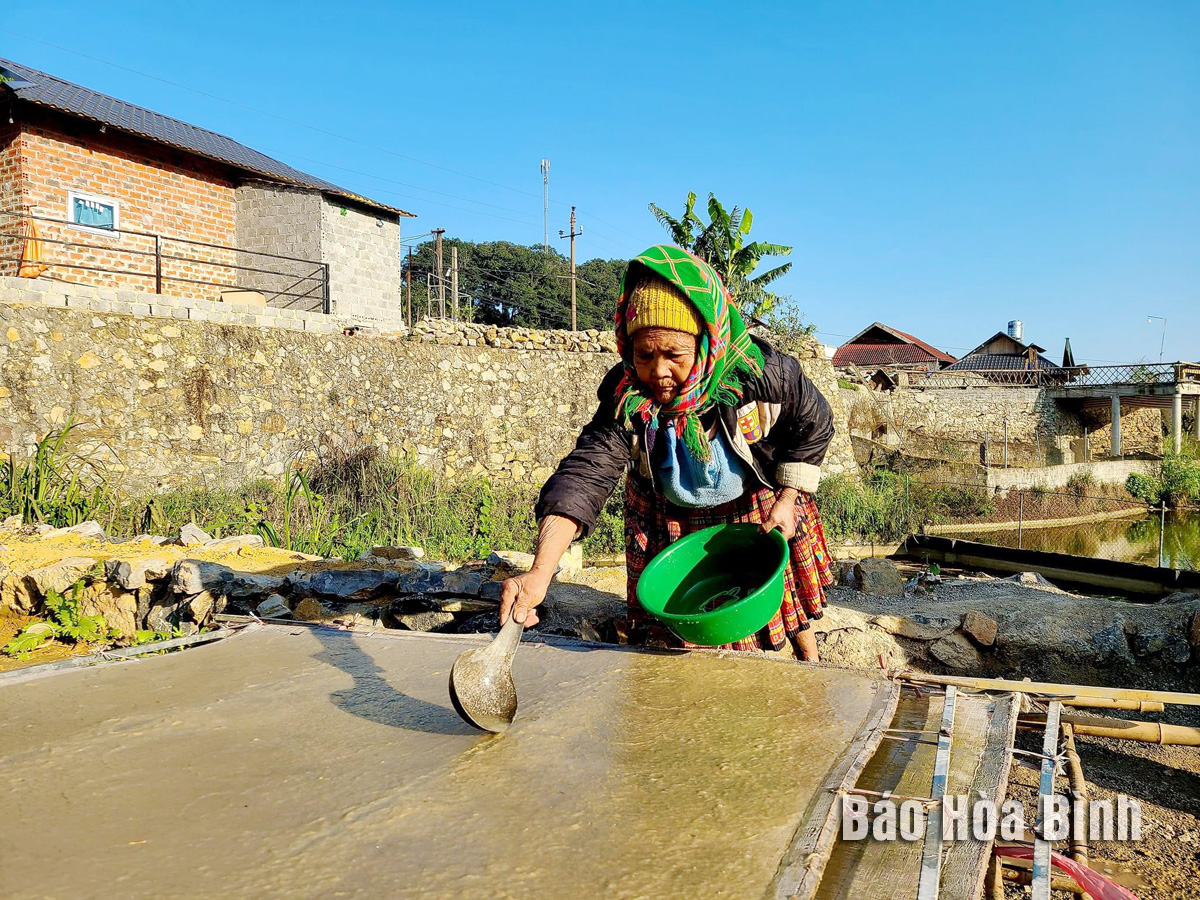
As usual, the traditional Tet (Lunar New Year) atmosphere of the Mong ethnic people in Mai Chau district is bustling at this time. Houses nestled on hillsides are filled with laughter and wishes for good luck in the new year. This year, people celebrate Tet with more excitement as their lives get better.

People in Hang Kia commune (Mai Chau)
prepare sheets of paper to stick around their houses, considered talismans to
bless their families with good health, luck, and prosperity in the new year.
According to traditional customs, Mong people celebrate
their traditional Tet one month before the national Lunar New Year holiday.
That is the time when people rest after rice and corn crops have been
harvested.
The family of Vang A Tenh, who lives in Thung Ang village
which is about 15km from Hang Kia commune’s centre, is busy preparing wine and
meat to welcome their relatives. The village has 124 households and all of them
are Mong ethnic people.
This year, the family decided to slaughter a pig for Tet and
prepare six trays of food for guests. The remaining pork was salted and hung in
the kitchen for use later.
Last year there were only a few dishes along with some corn
cakes, men men (steamed corn flour – an indispensable traditional food of the
Mong ethnic people) and wine, but this year witnesses many changes because
people’s living conditions have been improved. There are dozens of dishes made
from pork while banh giay (round glutinous rice cake) is replaced by sticky
rice.
This year, his family is much happier as they welcome many
guests. In Mong people’s perception, a lot of people visiting a family on this
occasion is believed to bring good fortune to the host. After a year of hard
work, this is the time for people to gather, chat with each other and wish for
good luck in the new year.
"A few years ago, it was difficult to raise pigs and cows
and people did not dare to slaughter them,” Tenh said.
This year, his family has escaped poverty and can slaughter
a pig to celebrate Tet, he said, adding that many households in the
neighbourhood follow suit so it's very happy.
During the Tet holidays, children accompany their parents to
visit relatives and friends. Young people in new clothes wander around the
village and play traditional games. This is also an opportunity for couples to
confess their love.
With an increasingly vibrant and widespread emulation movement aimed at building cultured residential areas and cultured families, Yen Thuy District has been making steady progress toward improving both the material and spiritual well-being of its people, while fostering a civilized, prosperous, beautiful, and progressive community.
Once lacking recreational spaces and community facilities, Residential Group 2 in Quynh Lam Ward (Hoa Binh City) has recently received attention for the construction of a new, spacious, and fully equipped cultural house. The project followed the model of state support combined with public contributions in both labor and funding.
The "All people unite to build cultural life" movement, which has been effectively integrated with Kim Boi district’s socio-economic development goals, is fostering a lively spirit of emulation across local residential areas, hamlets, villages, public agencies, and enterprises. In addition, through the initiative, traditional cultural values are being preserved and promoted, while community solidarity and mutual support in poverty reduction and economic development are being strengthened.
A working delegation of the Hoa Binh provincial People’s Committee led by its Permanent Vice Chairman Nguyen Van Toan on June 11 inspected the progress of a project to build the Mo Muong Cultural Heritage Conservation Space linked to tourism services in Hop Phong commune, Cao Phong district.
Born and growing in the heroic land of Muong Dong, Dinh Thi Kieu Dung, a resident in Bo town of Kim Boi district, in her childhood was nurtured by the sweet lullabies of her grandmother and mother. These melodies deeply imprinted on her soul, becoming an inseparable part of her love for her ethnic group's culture. For over 20 years, this love for her hometown has driven Dung to research, collect, and pass down the cultural values of the Muong people to future generations.
In the final days of May, the Ethnic Art Troupe of Hoa Binh Province organized performances to serve the people in remote, mountainous, and particularly disadvantaged areas within the province. These were not just ordinary artistic shows, but they were the meaningful journeys aimed at spreading cultural values, enhancing the spiritual life of the people and contributing to the preservation of ethnic minority cultural identities.



